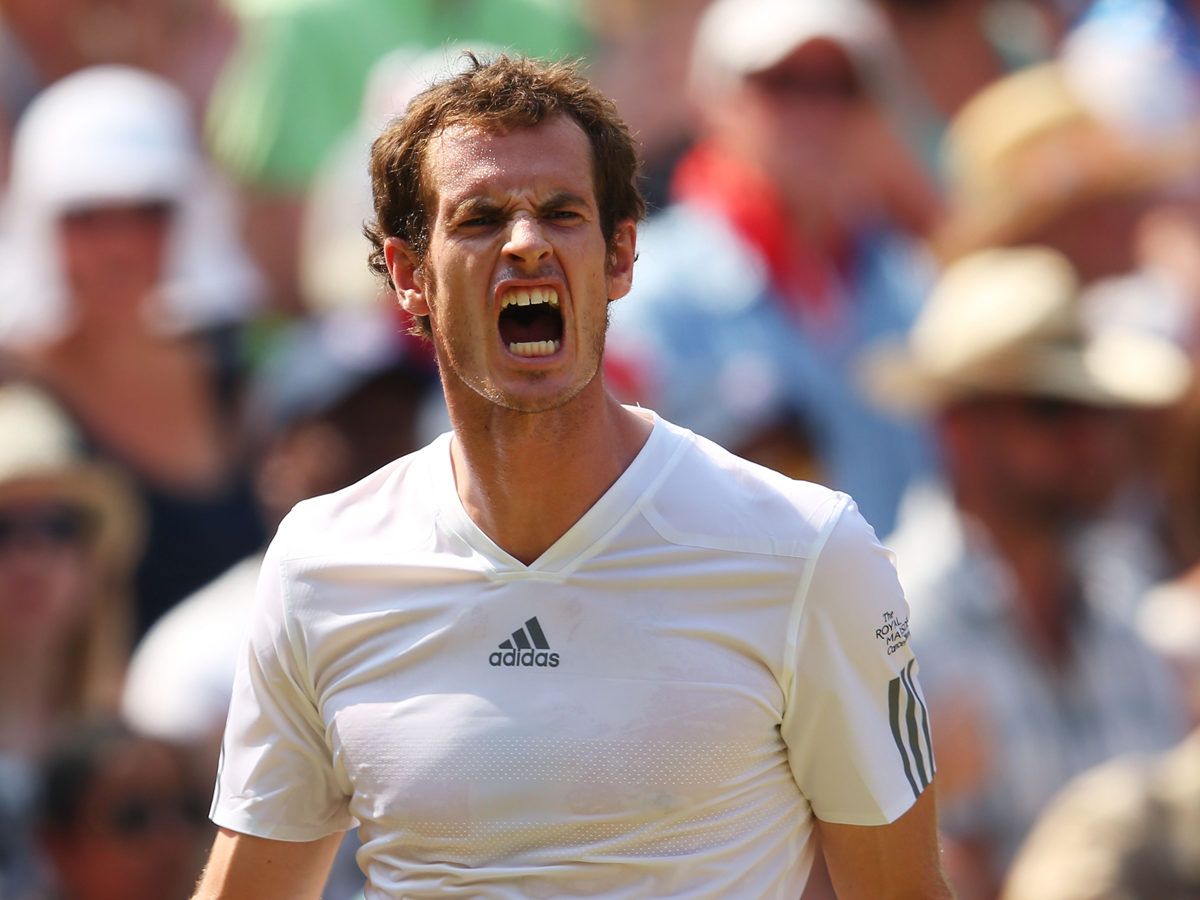Dear Sports Fan,
Is tennis sexist? After Andy Murray won at Wimbledon last week I heard a bunch of stuff about gender politics. What gives?
Thanks,
Amy

—- —- —
Dear Amy,
I don’t know if tennis is inherently sexist. There are a couple things about the sport and its culture and history that are controversially gendered if not out and out sexist. Two things happened last week that brought these feelings to the surface.
Last Sunday Andy Murray won the Men’s Finals at Wimbledon. Wimbledon is one of the four big tennis tournaments of the year and the only one that takes place in England. It drips with history and nationalism. The last time a British man had won Wimbledon was 1936 and before last week the British people were desperate for a local champion. Way back in 2006 ESPN ran an article about this entitled “Decline of the British Empire” in which it detailed the continued failure of the best British men’s tennis player at the time, Tim Henman:
“WIMBLEDON, England — The autopsy was predictably grim. For the 13th consecutive year, Tim Henman — led by the dour and disheartened British scribes — discussed his failure at the All England Club.”
The same year, the ESPN scribe Greg Garber identified a 19 year old Andy Murray as being the future hope of the British people. Seven years later, he finally won. As you might expect, the reaction of the British fans was enormous. Deadspin.com re-posted the almost messianic image on the front cover of the English newspaper The Times. After 77 years a Brit had won Wimbledon!! But wait, hold on a second, said a few small voices, hadn’t some British women won Wimbledon in the intervening years between 1936 and 2013? One of those voices, that of the feminist blogger and media personality Chloe Angyal, was in tweet form, retweeted almost 20,000 times:
Murray is indeed the first Brit to win Wimbledon in 77 years unless you think women are people.
The reverberations of this statement made it into the mainstream press even in England where The Guardian ran an article about the controversy and pointed out that not one but four British women have won Wimbledon since the last British man before Murray won the tournament.
Meanwhile, also on Twitter, another gendered conflict was brewing. A fan (or theoretically a troll) tweeted Andy Murray to say that he thought Serena Williams, the great women’s tennis champion, could beat Murray on grass. Murray went with it and tweeted back that he thought so to and that maybe someday they would play. For those readers who are tennis fans or over the age of 50 this probably brings back memories of Billie Jean King and Bobby Riggs’ Battle of the Sexes in 1973. Riggs was a former top men’s professional tennis player. At the age of 55 he became one of the sport’s great villains by claiming that women’s tennis was inferior to men’s and that he could, even at his age, beat top female players. His challenge was taken up first by Margaret Court, a great women’s player, and then after he beat her, by Billie Jean King. King was another great women’s player but not as great as Margaret Court, who won 24 major tournaments in her career, which remains a record. King was and is much more high profile off the court as an advocate for the game of tennis and for sexual equality. King beat Riggs soundly in front of a television audience of over 50 million.
The proposed match between Murray and Williams has none of the chauvinistic feel of the Riggs v. King spectacle. Both players are close to the top of their abilities and, though this would likely make it less of a close contest (Serena herself said she doubted she’d “win a point,”) it also significantly lowers the stakes when it comes to humiliation. Both players have responded to the idea as a fun exhibition for the sport of tennis and my guess is that if the match happens it will be all about making creative points on the court, not political points.
1973 was a breakthrough year for women’s tennis in another way — it was the year that the U.S. Open, the first major tennis tournament to do so, equalized the prize money between men and women. It took a long time for the other three major tournaments to follow suit. The Australian Open equalized in 2000 and the final two, the French Open and Wimbledon, didn’t until 2007. These moves have not been without criticism from players who point out that men and women tennis players are getting paid for different amounts of work. What’s that you say? That’s right, men continue to play best three out of five sets in major tournaments while the women play best two out of three. This may not sound like a big deal but it means that women’s finals at Wimbledon have averaged around 90 minutes in the past 30 or so years, while the men’s finals have averaged 150 minutes.[1] Many protest that the message this sends is that women are less able to hold up against the rigors of a long match, and tennis will remain at least somewhat sexist as long as this is true.[2] As the UK Telegraph concludes in their article about this conundrum, “equal pay can ultimately be justified only be equal play.”
Thanks for your question,
Ezra Fischer
- Possibly ironically, I got this stat from a blog post that used it to argue in favor of giving male tennis players more money for winning than female tennis players.↵
- Any readers who think that women actually couldn’t stand the rigors of a long match, please read Brian Phillips’ excellent Grantland piece about the Iditarod which features Aliy Zirkle, a woman who places a close second in the 1,000 mile week-long pain-fest of a dogsled race.↵

